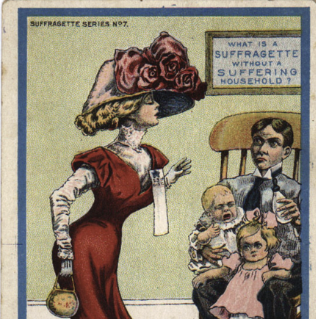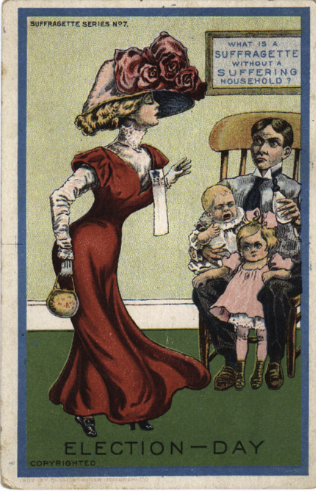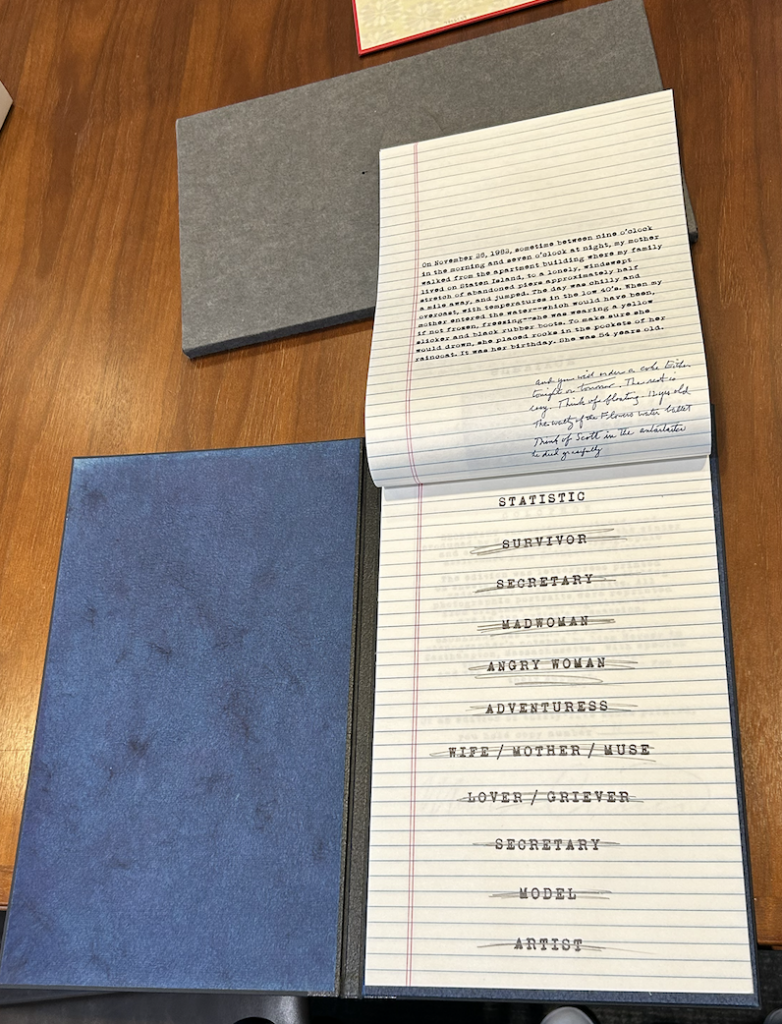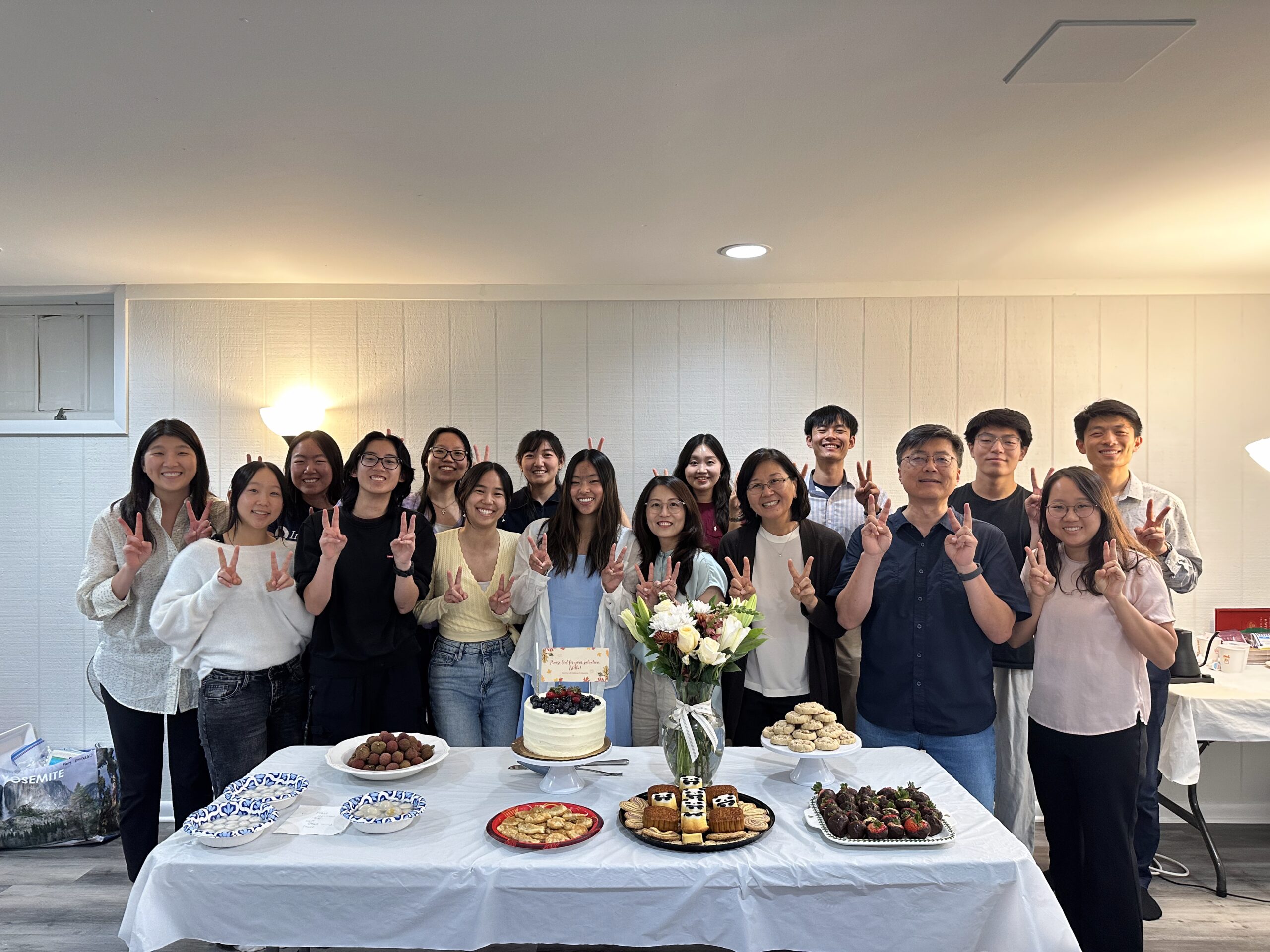
The Reintroduction to Writing program is a foundational abilities course required for all first-year students in the Krieger School of Arts & Sciences. It has diverse offerings that challenge students to rethink writing in ways that will help them throughout college and their future professional life. For my Reintroduction to Writing course, I was excited to engage with archival resources available at The Sheridan Libraries. I wanted to do more than just the research papers I was writing for my international studies classes.
My first project with the Sheridan Libraries focused on suffragette postcards. Prior to approaching the postcards, our class learned a lot about the suffragette movement from articles, biographies, and films. It’s surprising how little we’re taught about this incredibly complex movement. All I knew before was women marched and then got to vote. I wasn’t familiar with the opposing parties within the movement and how women’s suffrage intersected with class and race issues.
My classmates and I had the privilege of viewing the suffragette postcard collection with Heidi Herr, the Outreach Librarian for Special Collections. Heidi was so helpful in showing us postcards from that era and talking about the ways they reflected the different attitudes towards suffragettes. My first piece of writing was to research one postcard and analyze the rhetorical devices used by the artist to further the message of the image. I found it exciting to work with historical material and focus on the meaning and context behind one specific item.

The next project was the artist’s books. As the Smithsonian Libraries defines it, artist’s books are “a medium of artistic expression that uses the structure or function of ‘book’ as inspiration—a work of art in book form.” I was confused about what that exactly meant. I was even more worried we would be writing a piece arguing whether artist’s book should be considered a book.
After looking at the artist’s book collection with Heidi, I was surprised by the amount of meaning the unconventional form could hold. The artist’s book I chose was a moving piece called “The Secretary” by Maureen Cummins. Through the form of a secretary file, Cummins depicted the story of her mother’s mental health struggles and eventual suicide. With this project, I felt truly pushed beyond my writing comfort zone because we weren’t allowed to do outside research. I had to rely on my arguments and analysis, especially around the premise of “What is a book?” I’m grateful for this opportunity to engage with something so unfamiliar that also challenged my thinking and preconceptions.

For the final project, we were asked to write an Acquisition Proposal for a new collection for the Sheridan Libraries. In the proposal, we had to argue the feasibility and relevance of the items we would hypothetically add. I was inspired by the existing cookbook collection and wanted to expand upon that concept. I decided to propose the acquisition of Chinese American cookbooks. Now, I do realize I may have unintentionally begun a theme of talking about food with my work in this blog. I was mostly spurred by the notion that although Chinese American cuisine may have been maligned by the Asian community for being “inauthentic,” it tracks an inspirational story of how Chinese American immigrants assimilated and thrived in a discriminatory nation. It was so much fun writing this proposal because of how different it was from the other work I was doing. Unlike the specific prompts of my other courses, I was able to be more inventive with my topic.
Above all, I had the best time in my Reintroduction to Writing class because of Dr. Hartmann-Villalta, who was always so generous with her time and support and gave amazing feedback. I know she has made me a better writer and a better student. Through my Reintroduction to Writing class, I also got to visit the Peabody Library and hold Shakespeare’s First Folio from 1664. Even if a college writing intensive may not seem like it’s up your alley, from my experience, it makes you a more creative and well-rounded writer and introduces you to texts and styles you may have never imagined.







